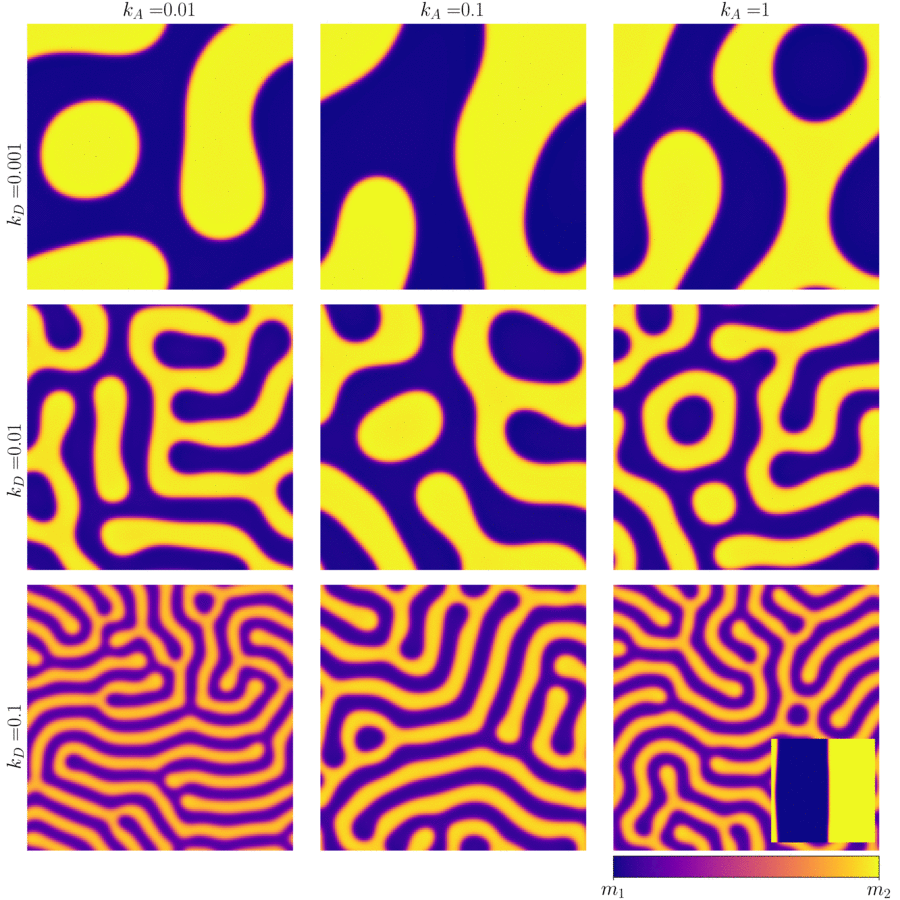Can Physics help cells to communicate?
- Nirvana Belén Caballero

- Jul 25, 2023
- 3 min read
Living Cells are full of fluid lipid membranes whose main function is to compartmentalize the cell interior and separate the cell from its environment. At the same time, diverse patterns that play essential roles in vital processes form on their surfaces.
PUBLISHED ARTICLE: Phase separation on surfaces in the presence of matter exchange, by Nirvana Caballero, Karsten Kruse and Thierry Giamarchi. PRE Letter (2023)
Cells are considered the fundamental units of life, each surrounded by a fluid membrane. These membranes not only protect the cells but also display captivating patterns on their surfaces, which can be involved in the communication between different cells or between a cell and its environment. The question of the origin of such patterns and the underlying physical principles that govern their formation is considerably challenging, and has long fascinated scientists in Physics and Biology. In our recent study, we present a theory to explain how a possible simple physical principle can be responsible for pattern formation in cell membranes.

Motivation: Patterns in cellular membranes
Living cells are fascinating entities, and at their core lies the fluid lipid membrane, an essential structure that both compartmentalizes the cell interior and separates it from the external environment. These membranes are not just passive barriers; they hold intricate patterns that play crucial roles in vital processes. For instance, protein clusters act as units for sensing signals within and outside the cell, and these clusters can transiently appear or persist, often being associated with specific lipid-rich regions. Another captivating phenomenon is the occurrence of protein waves on these membranes, either stationary or travelling, which can lead to turbulent dynamics. These surface-associated patterns can be reproduced in laboratory experiments outside of living cells, suggesting that they can be the result of a combination of simple mechanisms.
The physical principles underlying the formation of these patterns are still not fully understood, and traditional reaction-diffusion systems might overlook critical factors. For instance, convective transport along the membrane surface can play a crucial role, especially in patterns associated with the cellular polymer network known as the cytoskeleton. Additionally, rearrangements on the membrane's surface are essential for creating lipid domains. While lipid phase separation usually leads to complete separation, the interplay of line tension and membrane bending can produce stable domain patterns.
Our theory: A physical mechanism leads to pattern formation in a surface
We present a theory that allows us to make progress in the understanding of pattern formation in cellular membranes.
From a physics perspective, one can simplify the problem to consider the minimum necessary ingredients to disentangle the main mechanisms responsible for an observed effect: our job as physicists consist in determining, from a plethora of many different effects and interactions, which are the ones that play a role in the phenomenon we want to study.
In this case, we consider a surface exchanging matter with a bulk environment, as depicted in Figure 1. Note that, at this theory level, we are searching for a fundamental physical law, which means that we are inspired by observations in cellular membranes but our theory is generally applicable to many kinds of systems.
We describe our system with two different phase-fields: one for matter distribution in the environment and one to describe matter on the surface. We propose that matter can be absorbed and desorbed from the surface with different rates ka and kd respectively. From matter conservation and a generalized hydrodynamic equation for the surface and by integrating the bulk dynamics we obtain a single equation for matter distribution on the surface*.
Our results: Matter exchange and pattern formation
Charateristic domain lenghscales emerge as a consequence of matter exchange rates.
Our analysis of matter exchange between the cell membrane and its surroundings revealed the spontaneous emergence of complex composition patterns on the membrane's surface. These patterns are influenced by the rates at which matter exchanges occur. Intriguingly, we demonstrated that these patterns can exhibit a characteristic length scale, wherein the memory of the membrane's previous states plays a significant role, unveiling an unprecedented aspect of membrane dynamics. These findings not only provide a physical explanation for the internal structure of cellular membranes but also unlock the possibility to understand processes of absorption of living cells.
*This procedure can be done in two ways: an easy one through a Fourier transform of the equations which we explain in detail in the Supplementary Material of our paper, and a more involved one, through writing the Martin-Siggia-Rose action. We still get the same results, luckily.





Comments